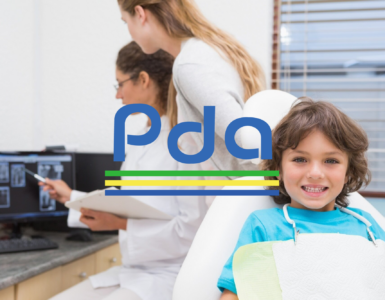Understanding Premature Ejaculation: Prevalence and Clinical Impact
Premature ejaculation (PE) is one of the most frequently reported forms of male sexual dysfunction, with a particularly high prevalence among older men. Clinical studies estimate that 20% to 30% of men experience PE at some point in their lives, with rates increasing alongside age and the emergence of related urologic conditions such as prostate enlargement, hormonal shifts, and erectile dysfunction.
While PE has clear physiological underpinnings including neurological sensitivity, hormonal imbalance, and underlying inflammation it also carries significant psychological and relational consequences. Many men report feelings of frustration, inadequacy, and emotional distance from their partners, which can compound performance anxiety and create a self-perpetuating cycle of distress.
To address these complex, overlapping challenges, men’s health clinics in major metropolitan areas, including New York City, have become specialized centers for the comprehensive treatment of PE. These practices offer an integrative model that combines:
- Medical assessment and diagnostic testing to evaluate hormonal, neurological, and urological contributors
- Behavioral therapy and sexual function coaching to build control, reduce anxiety, and improve relational communication
- Targeted pharmacologic interventions, including SSRIs and topical anesthetics, tailored to the unique needs of aging men
Men who initially seek care from an erectile dysfunction doctor New York City often discover that these clinics provide interconnected services allowing for coordinated care that addresses a wide spectrum of sexual and urologic concerns in one setting.
This multidimensional approach ensures that PE is not treated in isolation, but as part of a broader picture of men’s health. By understanding the full clinical impact of premature ejaculation and responding with personalized, age-aware care these centers are helping men regain confidence, strengthen relationships, and restore long-term sexual wellness.
Comprehensive Clinical Evaluation
A thorough diagnostic process is essential in the effective treatment of premature ejaculation. Most men’s health clinics begin with a multi-layered evaluation designed to uncover the full spectrum of factorsmedical, psychological, and lifestyle-relatedthat may be contributing to the condition. Rather than assuming a one-size-fits-all cause, this approach ensures that care is tailored to the individual and grounded in clinical precision.
These comprehensive assessments typically focus on identifying:
- Underlying health conditions such as diabetes, thyroid imbalances, or cardiovascular disease, which can affect nerve function and hormonal regulation.
- Psychological contributors include anxiety, depression, or past trauma, all of which can accelerate arousal and impact ejaculatory control.
- Side effects of current medications, particularly antidepressants, antihypertensives, or stimulants that may alter sexual function.
- Neurological or urological dysfunctions, including nerve hypersensitivity, pelvic floor issues, or chronic prostatitis.
Patients presenting with comorbid symptoms such as erectile difficulties, chronic pelvic pain, or urinary complications may be referred to a urologist Manhattan to ensure that no underlying anatomical or systemic conditions are overlooked. This level of specialty collaboration is critical in differentiating between overlapping disorders and in formulating a treatment plan that addresses root causes rather than just symptoms.
Ultimately, comprehensive diagnostics lay the foundation for a personalized treatment pathway. With a full understanding of the biological and psychological landscape, clinicians can craft more effective, long-term solutions that are responsive to the unique challenges of each patient.

Behavioral and Psychological Treatment Approaches
Behavioral and psychological therapies are foundational components of effective premature ejaculation treatment, especially for older men who often prefer non-invasive, low-risk options that align with their broader health goals. These interventions target both the physical reflexes and mental patterns that contribute to PE, offering strategies that are practical, empowering, and sustainable over time.
Clinics frequently employ a range of evidence-based therapies, including:
- The stop-start technique: Teaches men to recognize and control rising arousal through timed pauses during stimulation.
- The squeeze method: Involves applying pressure to specific points on the penis to delay climax, enhancing ejaculatory control.
- Pelvic floor exercises: Strengthens the muscles involved in ejaculation, improving physical endurance and responsiveness.
- Mindfulness and relaxation strategies: Reduces performance anxiety by promoting body awareness, breath control, and emotional regulation.
- Psychosexual counseling and cognitive behavioral therapy (CBT): Addresses negative beliefs, anxiety triggers, and relationship challenges that may contribute to premature ejaculation.
These therapies are often delivered by certified sex therapists or trained behavioral specialists, ensuring patients receive guidance that is both clinically sound and tailored to their personal needs.
When coordinated with medical managementsuch as SSRIs or topical anestheticsthese interventions have been shown to significantly improve control over ejaculation, enhance emotional intimacy, and increase long-term sexual satisfaction.
For men managing multiple conditions, including erectile dysfunction, prostate issues, or hormonal imbalances, care is often coordinated with a urology doctor NYC. This collaboration ensures a comprehensive treatment plan that addresses both the physical and psychological aspects of PEdelivering better outcomes and a more cohesive, confidence-building experience.
Pharmacological Management
Pharmacotherapy remains a cornerstone in the clinical management of premature ejaculation, particularly for patients seeking rapid symptom relief or those whose condition is linked to neurochemical imbalances. Medications can be highly effective in delaying ejaculation, reducing hypersensitivity, and supporting emotional regulation especially when combined with behavioral or psychological therapies.
Common pharmacologic options include:
- Selective serotonin reuptake inhibitors (SSRIs) such as paroxetine and sertraline: These are often prescribed at low doses to increase serotonin levels in the brain, which helps delay the ejaculatory reflex. SSRIs are especially beneficial for patients who also experience performance anxiety or depression.
- Dapoxetine: A fast-acting SSRI specifically developed for the treatment of PE and approved in several countries outside the U.S. It is taken on-demand and offers flexibility for men who prefer episodic rather than continuous treatment.
- Topical anesthetics such as lidocaine-prilocaine creams: Applied directly to the penis, these agents reduce sensitivity and can extend intercourse duration without systemic effects.
- Tricyclic antidepressants like clomipramine: Though less commonly used than SSRIs, clomipramine can be effective for certain patients when first-line medications are not suitable or well-tolerated.
In cases where premature ejaculation coexists with erectile dysfunction, a common scenario among older men, coordination with an erectile dysfunction doctor NYC ensures that treatment is fully integrated. This collaboration allows clinicians to optimize both ejaculatory control and erectile function, rather than treating each issue in isolation leading to improved patient outcomes and overall sexual satisfaction.
Through careful medication selection, dosage adjustment, and patient monitoring, pharmacologic treatment offers a reliable pathway to symptom relief and quality-of-life improvement for men at any stage of life.
The Role of Specialized Men’s Clinics
Specialized men’s health clinics have emerged as essential resources for addressing complex conditions like premature ejaculation and erectile dysfunction especially among older men who often face multiple, overlapping health challenges. These clinics are uniquely structured to provide high-quality, integrated care in an environment that prioritizes comfort, discretion, and comprehensive support.
Key features of these clinics include:
- Multidisciplinary teams: Patients benefit from access to a coordinated group of experts, including urologists, endocrinologists, mental health professionals, and sexual health specialists. This ensures that all biological, hormonal, and psychological factors are addressed within a single care setting.
- Confidential environments: With private consultation rooms and judgment-free staff, these clinics create a space where men can speak openly about sensitive concerns. This level of privacy is often a deciding factor for men who might otherwise delay seeking care.
- Streamlined referral systems: In-house collaboration allows for seamless referrals between specialties. Whether a patient needs hormonal testing, pelvic floor therapy, or counseling, the process is efficient, coordinated, and patient-centered.
These elements are particularly appealing to older male patients, many of whom have been hesitant to pursue help due to stigma, embarrassment, or concerns about confidentiality. In metropolitan areas like New York, the collaborative care model found in these clinics ensures that men receive targeted, effective treatment without having to navigate fragmented healthcare systems.
Men seeking an erectile dysfunction doctor New York City often discover that these specialized clinics offer far more than symptom management; they provide a holistic approach to men’s sexual health that emphasizes long-term wellness, emotional support, and restored quality of life.
Long-Term Patient Outcomes
Long-term outcomes for men undergoing treatment for premature ejaculation are increasingly positive, particularly when care integrates both behavioral therapy and pharmacologic intervention. Clinical studies have consistently shown that this dual-modality approach can increase intravaginal ejaculatory latency time (IELT) by two to four times the patient’s baseline, resulting in greater control, confidence, and satisfaction.
Beyond improved timing, patients frequently report lasting gains in multiple areas of sexual and emotional health, including:
- Sexual self-confidence: As control improves, anxiety around performance decreases, leading to more relaxed and satisfying sexual encounters.
- Relationship satisfaction: Improved communication, mutual understanding, and emotional connection contribute to deeper intimacy with partners.
- Anxiety reduction: With fewer fears of rapid climax or disappointing outcomes, many men experience reduced anticipatory anxiety and overall stress.
- Communication with partners: Treatment often facilitates open dialogue about needs and expectations, creating stronger relational trust and emotional resilience.
Importantly, men whose symptoms are multifactorial, for example, involving prostate health, chronic inflammation, or urinary dysfunction benefit significantly from care that includes ongoing evaluation by a urology doctor NYC. These specialists play a vital role in detecting and managing urological conditions that may either mimic or exacerbate PE, ensuring that all contributing factors are addressed comprehensively.
By focusing on long-term improvement rather than short-term symptom relief, modern men’s health clinics help patients achieve lasting sexual wellness, stronger relationships, and a better overall quality of life.
Addressing Urological Comorbidities
Premature ejaculation (PE) often does not occur in isolation, particularly in older men, where it frequently intersects with other urological and sexual health conditions. Recognizing and treating these comorbidities is critical to achieving comprehensive and sustainable improvement.
Common coexisting conditions include:
- Benign prostatic hyperplasia (BPH): Prostate enlargement can affect ejaculatory control and overall sexual function by altering pelvic dynamics and causing discomfort or inflammation.
- Erectile dysfunction (ED): Many men with PE also struggle with maintaining erections, which can compound anxiety and reduce sexual confidence.
- Lower urinary tract symptoms (LUTS): Issues such as urinary frequency, urgency, or nocturia are often linked to prostate dysfunction and can affect both sexual performance and quality of life.
The presence of these interconnected issues underscores the importance of coordinated care. Timely referrals to a urologist Manhattan allow for a comprehensive evaluation of urologic health, including prostate exams, hormone panels, and diagnostic imaging when needed. These evaluations not only help differentiate between overlapping symptoms but also ensure that any underlying structural or functional issues are addressed alongside sexual performance concerns.
By collaborating with sexual health experts, urologists can tailor treatment plans that integrate medical, behavioral, and procedural interventions creating a truly holistic approach to care. For older men managing multiple conditions, this interdisciplinary coordination ensures that no aspect of their health is overlooked, supporting both immediate relief and long-term sexual wellness.
Health Agency Guidelines and Clinical Research
Trusted health organizations support the integrated approach taken by men’s health clinics. For example:
- The National Institute of Diabetes and Digestive and Kidney Diseases (NIDDK) recommends comprehensive diagnostics for sexual dysfunctions, including hormonal and psychological evaluations.
- The Centers for Disease Control and Prevention (CDC) stresses preventive care and sexual health education for aging men.
- The U.S. Department of Health & Human Services (HHS) provides data on health outcomes and access disparities in male health care.
These resources affirm the credibility of evidence-based practices used by specialized clinics.
Emerging Technologies in PE Management
Advancements in digital health and biomedical engineering are rapidly transforming how premature ejaculation (PE) is diagnosed, monitored, and managed. These emerging technologies are particularly valuable for older adults and those with limited access to in-person care, offering increased flexibility, personalization, and long-term engagement.
Innovative tools currently reshaping men’s sexual health care include:
- Wearable pelvic floor trainers and digital monitoring devices: These tools use biofeedback to help men strengthen the pelvic floor muscles critical to ejaculatory control. By offering real-time feedback, they enhance adherence and improve outcomes when used alongside clinical guidance.
- Telehealth platforms for therapy and medication management: Virtual consultations have made it easier than ever to access sex therapy, behavioral coaching, and prescription management without compromising privacy. This is particularly helpful for patients juggling chronic health issues or mobility concerns.
- Smartphone applications for ejaculatory timing and sexual performance tracking: App-based solutions now allow men to log sexual activity, track progress, and receive behavioral cues or mindfulness exercises, increasing engagement and accountability in the treatment process.
Patients working with a urology doctor NYC benefit greatly from the streamlined integration of these technologies into traditional care models. Urologists and sex health specialists can remotely monitor patient progress, adjust treatment plans, and provide timely interventions based on digital feedback all while maintaining the depth of a personalized, in-clinic relationship.
As these tools become more sophisticated, they will continue to expand the reach and effectiveness of PE treatment, making it easier for men to access high-quality care, track measurable progress, and sustain long-term improvements in sexual function.
Patient Awareness and Early Intervention
Despite the availability of effective, evidence-based treatments for premature ejaculation (PE), many men continue to delay seeking professional help. Research shows that this reluctance is driven by a combination of social stigma, misinformation, and the mistaken belief that PE is simply a normal consequence of aging.
Unfortunately, this delay often leads to prolonged emotional distress, relationship strain, and missed opportunities for early intervention. By the time many men pursue care, they may also be dealing with additional issues such as erectile dysfunction, prostate conditions, or mental health challenges, which complicate the clinical picture.
To combat these barriers, educational outreach and public health campaigns play a critical role. These initiatives can:
- Dispel myths about aging and sexual function
- Promote open dialogue about men’s health
- Highlight the safety and effectiveness of modern treatment options
- Encourage routine screening and preventive care
Clinics that offer integrative assessments, including both sexual performance and urologic function, are increasingly favored by men seeking comprehensive solutions. Patients searching for a urology doctor NYC often gravitate toward practices that combine medical, psychological, and lifestyle-based evaluations allowing for more nuanced and effective treatment plans.
Those experiencing both PE and erectile challenges may also benefit from the specialized expertise of an erectile dysfunction doctor Manhattan, who can co-manage care in coordination with urologists and behavioral therapists.
By increasing awareness and promoting early intervention, healthcare providers can help men take proactive control of their sexual health leading to better outcomes, restored confidence, and improved quality of life.

Coordinated Care and Multidisciplinary Benefits
Successfully treating premature ejaculation (PE)especially when it coexists with other conditions like erectile dysfunction (ED)often requires more than one specialist. That’s why multidisciplinary men’s health clinics have become the gold standard in delivering efficient, personalized care. These clinics bring together experts across medical and mental health disciplines to offer streamlined, results-driven treatment in one unified setting.
Key benefits of this coordinated care model include:
- Streamlined internal referrals: Patients can quickly transition between providers such as urologists, endocrinologists, and sex therapists without delays or disjointed communication.
- Shared electronic health records (EHRs): Clinicians can access up-to-date patient histories, lab results, and treatment plans in real time ensuring consistency and eliminating redundant procedures.
- Coordinated medication management: When multiple prescriptions are in play such as SSRIs for PE and PDE5 inhibitors for EDclinicians work together to avoid interactions and optimize dosing strategies.
Men facing dual concerns, like ejaculatory control and erectile performance, benefit significantly from being seen by both an erectile dysfunction doctor Manhattan and a behavioral therapist within the same clinical infrastructure. This team-based approach ensures that all underlying causes be they hormonal, neurological, psychological, or relational are addressed with clarity and collaboration.
Ultimately, coordinated multidisciplinary care not only accelerates progress but also reduces patient frustration, fosters stronger provider-patient relationships, and enhances long-term treatment outcomes. It’s a model that reflects the complexity of men’s health and meets it with equally comprehensive solutions.
Clinical Measurement Tools
Objective measurement is a critical component in both the diagnosis and long-term management of premature ejaculation (PE). By establishing quantifiable baselines and tracking progress over time, clinicians can tailor treatments more precisely and evaluate their effectiveness with clarity.
Common tools used in clinical settings include:
- Stopwatch-based timing of intravaginal ejaculatory latency time (IELT): Considered the gold standard for assessing ejaculatory control, this method involves timing the duration from vaginal penetration to ejaculation. It provides a direct, quantifiable benchmark for improvement.
- Validated self-report scales like the Premature Ejaculation Diagnostic Tool (PEDT): This structured questionnaire assesses the frequency, control, distress, and interpersonal difficulty related to PE. It offers valuable insight into the emotional and relational impact of the condition.
- Semen analysis and hormonal panels (when indicated): These tests help uncover underlying physiological issues, such as low testosterone, elevated prolactin, or thyroid dysfunction, which may contribute to ejaculatory irregularities.
By incorporating these clinical measurement tools, healthcare providers, particularly those in specialized men’s health and urology clinics can deliver customized, data-driven treatment plans. Regular assessments allow for adjustments in medication, behavioral strategies, or counseling focus, ultimately improving outcomes and patient satisfaction.
These tools also foster transparency in care, helping patients understand their own progress and remain engaged in their health journey.
Encouraging Exploration Through Trusted Resources
For men seeking to better understand premature ejaculation and its relationship to broader urologic health, accessing reliable, evidence-based resources is an essential first step. National organizations such as the National Institute of Diabetes and Digestive and Kidney Diseases (NIDDK), the Centers for Disease Control and Prevention (CDC), and the U.S. Department of Health & Human Services (HHS) offer trusted, up-to-date information on sexual function, hormone health, and men’s wellness.
These resources can help demystify common misconceptions, clarify when to seek care, and provide context on available treatment options.
For those researching medical care options in New York, connecting with a urology doctor NYC, erectile dysfunction doctor NYC, or erectile dysfunction doctor Manhattan affiliated with a comprehensive men’s health clinic can make a meaningful difference. These clinics combine medical, psychological, and lifestyle-based support under one roof, streamlining diagnosis and enhancing long-term care continuity.
Integrated, multidisciplinary treatment models are particularly beneficial for older men managing overlapping concerns such as prostate conditions, hormonal changes, or chronic stress. With coordinated care, patients receive not only symptom relief but also broader improvements in confidence, relationships, and quality of life.
By seeking support early and exploring credible resources, men can take proactive, empowered steps toward improved sexual health and overall well-being.





